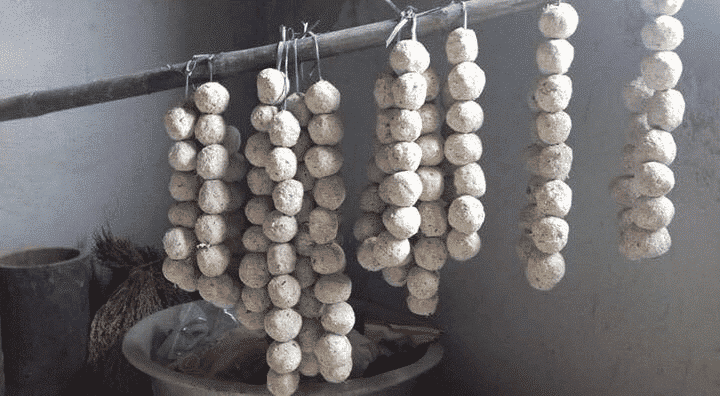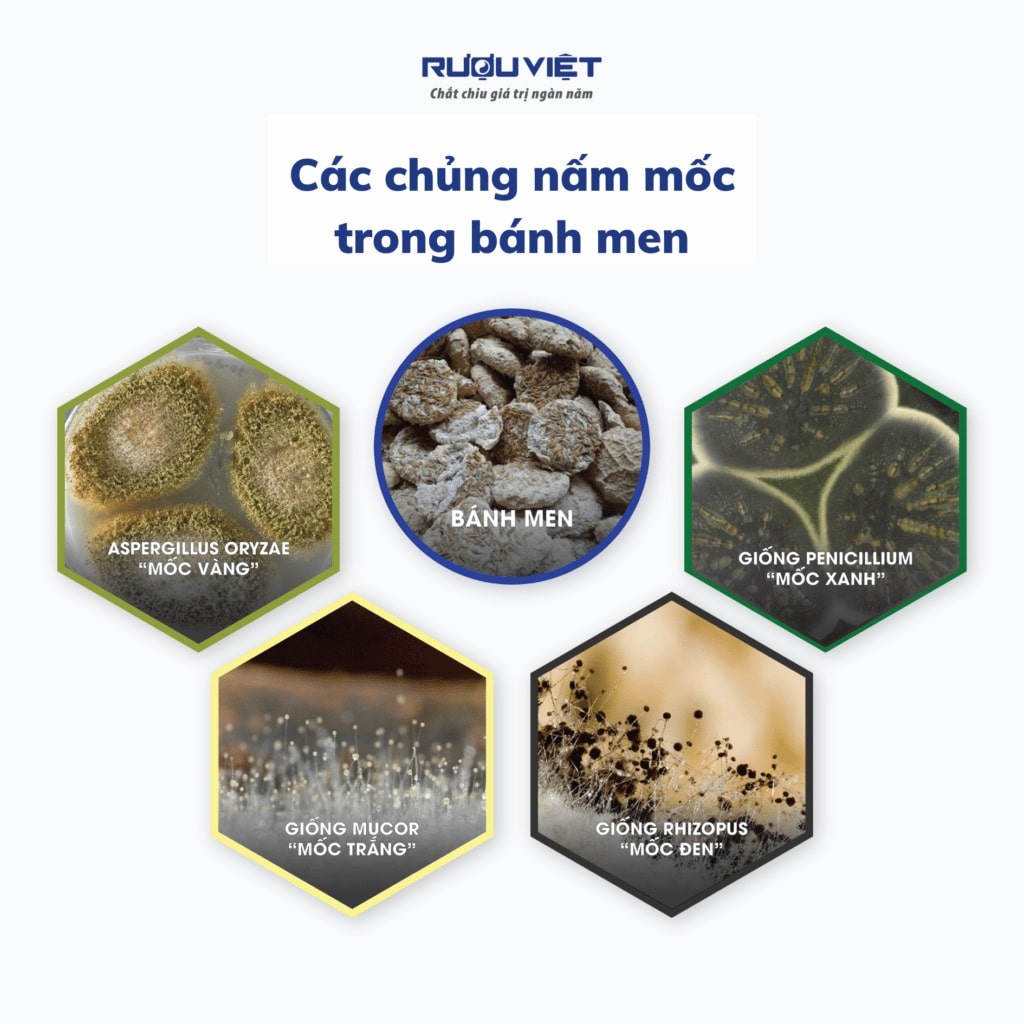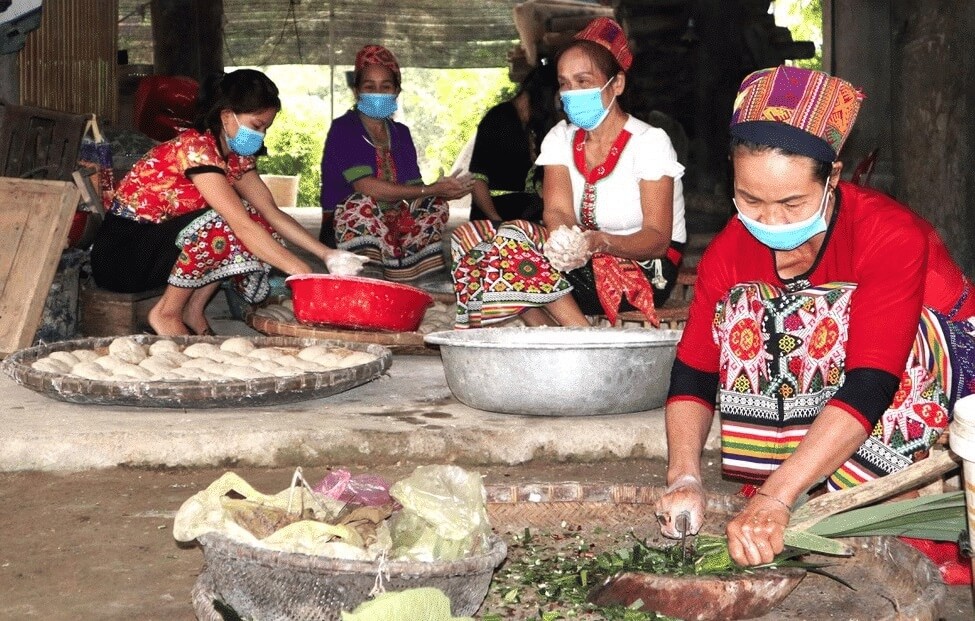Although the subject of leaves yeast is not new, most traditional wine drinkers find it very challenging to learn the production secrets of this yeast line. Because of geographical barriers, yeast wine has become the "rice cooker" of ethnic people. What are microbiological properties? Does the wine's flavor fade over time? This article will analyze Vietnamese wine for readers. Viet Wine sẽ phân tích cho bạn đọc tại bài viết này.
What is leaves yeast?
The yeast used to make ethnic minority wine is leaves yeast.
Leaves yeast have a porous shape similar to Chinese yeast, but they are less wrinkled, milky white, small in size, and firmer in hand than Chinese yeast.

Leaves yeast structure
The structure of leaf enamel can be viewed from two perspectives: microbiological and raw material.
Microbiological structure
The microbiological traits of Chinese yeast and leaves yeast are identical. Mold system, yeast system, and bacteria make up the three sections. In the article about Chinese yeast, very carefully examined.

The structure according to material
- Original yeast cakes are high-quality, great yeast cakes. The goal of baker's yeast is to pass on virulent, superior strains and species of yeast to fresh batches of yeast.
- The primary use of rice flour is as a surface on which mold, yeast, and bacteria can attach and grow.
- Forest Trees: The claim that yeast bread contains 25–35 forest plants is frequently exaggerated. However, due to the scarcity of wild forest trees and the diversity of local leaf types, most now only use 10 to 15 species.
Some of the forest leaves of the ethnic compatriots
Several ethnic groups continue to utilize more than 20 different kinds of forest trees.
To make Can wine, the Cho Ro community in Dong Nai, for instance, uses up to 24 different types of herbs, such as Curculigo orchioides, yacón, Lindera myrrha Merr, Dong Nai delpy , Euodia Lepta Merr, Paddy oats, Platycerium grande, Lesser Galangal, Psychotria rubra Poir, Sebesten fruit, Tylophora juventas Woodf, Elephant's Ear Plant, Pothos repens (Lour.), Platycerium grande J. Sm, Pothos, eucalyptus trees, Three - leaf cayratia, Uvaria grandiflora, Chinese Yam, Drynaria fortunei J.Sm, Platycladus orientalis , Ginger, Ardisia quinquegona Blume.
Or, like the Van Kieu ethnic group who reside in the province of Quang Tri, they also use ingredients from trees that are very familiar to them and are integral to daily life, like chili, pepper, sugarcane, and cinnamon leaves. The wine yeast is produced using a total of about 15 different types of roots and leaves.
Or, like the people of the Central Highlands, they frequently combine rice with fresh galangal root, chili, dried forest bitter melon, dried Boh Pang fruit, fresh sugar cane, fresh chayote, and fresh yam bark in a mortar and pestle.

In the northern provinces:
Elephantopus scaber (also known as 36-rooted tree); Gerbera jamesonii (also known as 30-rooted tree), Adenosma glutinosum (also known as Nha hom), Clematis chinensis Osbeck (also known as re den, mua khom khia), Wedelia chinensis, Smilax glabra, Millettia speciosa, Chrysanthemum, Bupleurum Chinense, Adenosma caeruleum R.Br boiled in water to make wine yeast.
=> Like organic antigens, forest plants combine to give each region's yeast cake a distinctive flavor.
3. Features of leaves enamel:
- The liquor of leaves yeast has a flavor that is spicy but not overpowering and fragrant but not as crisp as Chinese yeast. The primary flavors, which include orange peel, chili, lemongrass, and galangal, leave a sweet aftertaste when consumed.
- Alcohol production is extremely low: 100kg of corn can only produce 40-55 liters of standard 40-degree alcohol.
- Long fermentation period: from yeast to distillation, typically 13 to 22 days.
- Due to its lengthy fermentation process and low yield, leaves yeats liquor is expensive.
The state of wine yeast today
In fact, due to hybridization, mixing, and loss of originality, this line of yeast is no longer the same as it once was. Because forest trees are becoming more and more scarce, some people combine Chinese yeast and probiotics to speed up fermentation and improve performance. Any manufacturer who produces one batch of wine in less than ten days almost certainly uses a mixture rather than 100% yeast.
